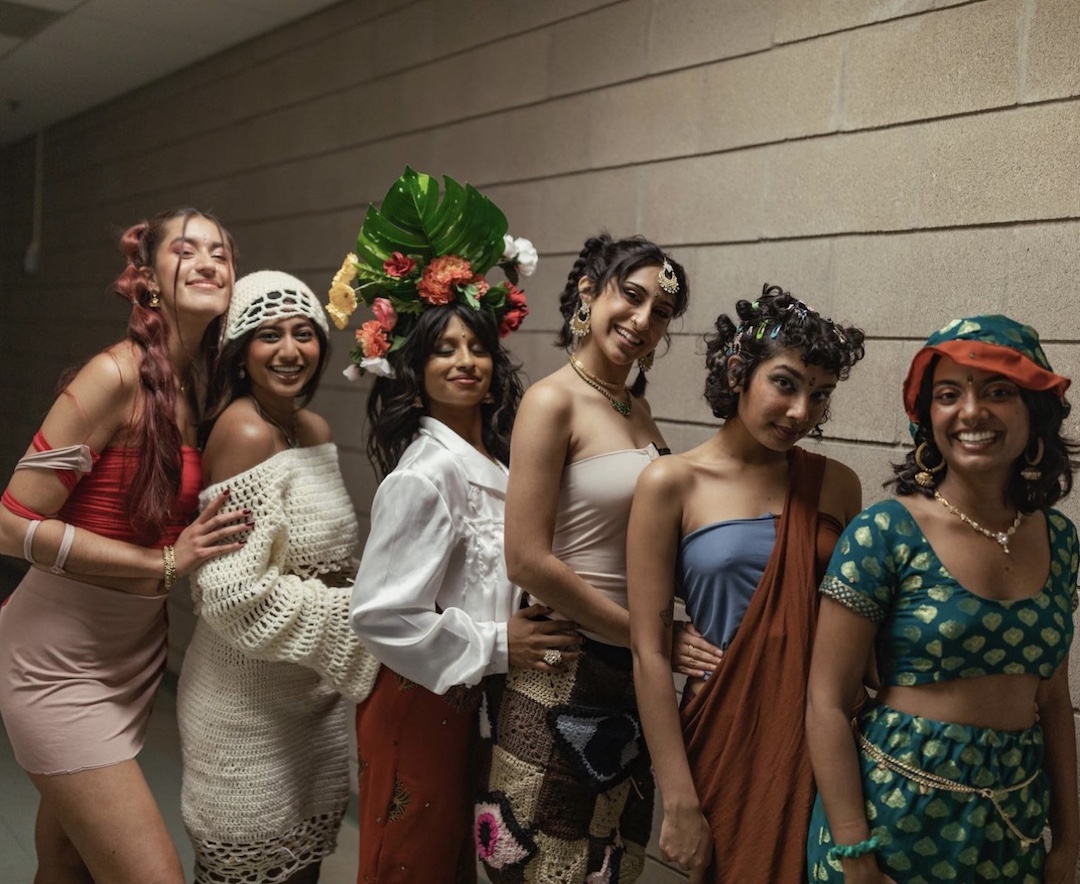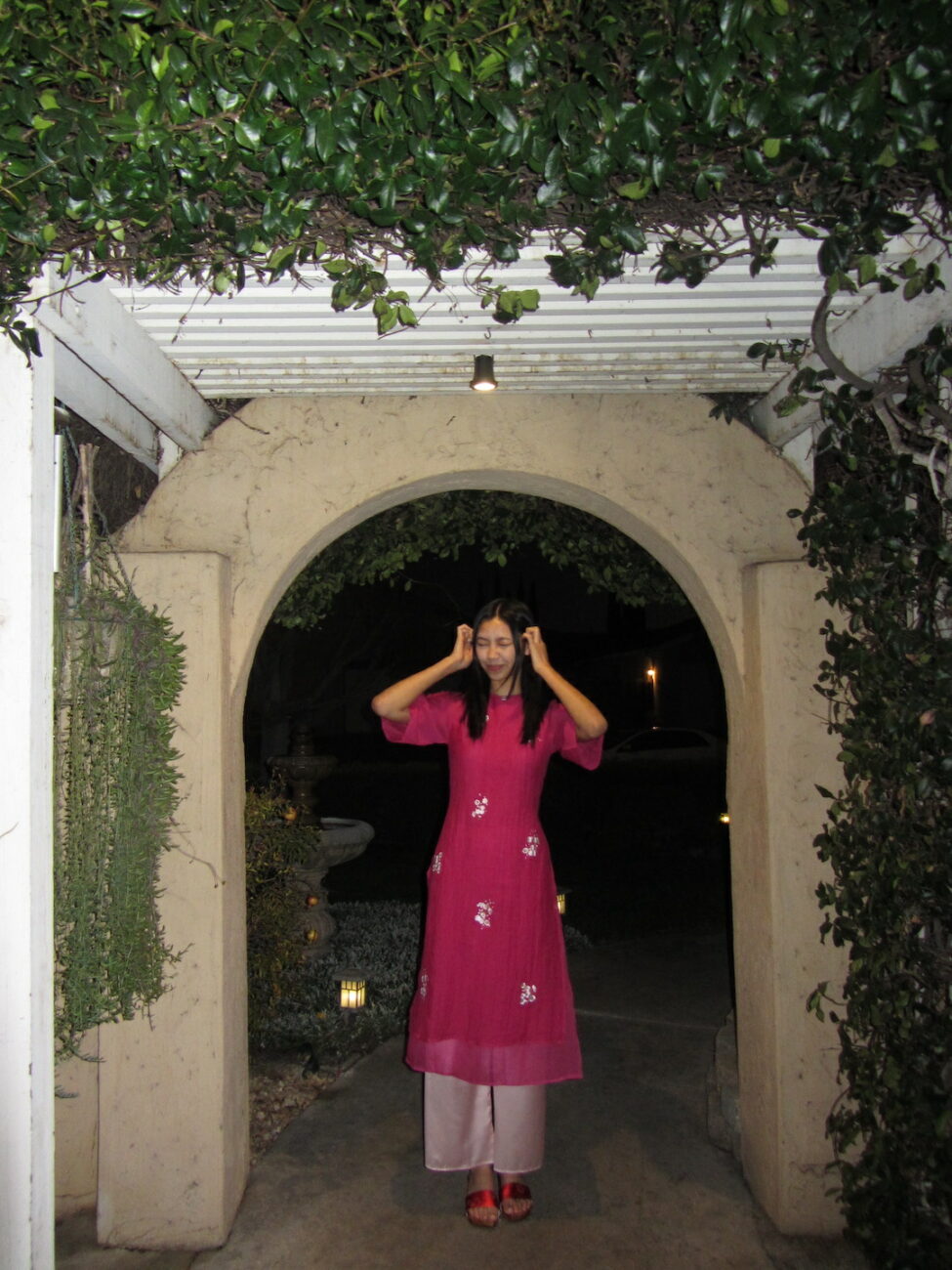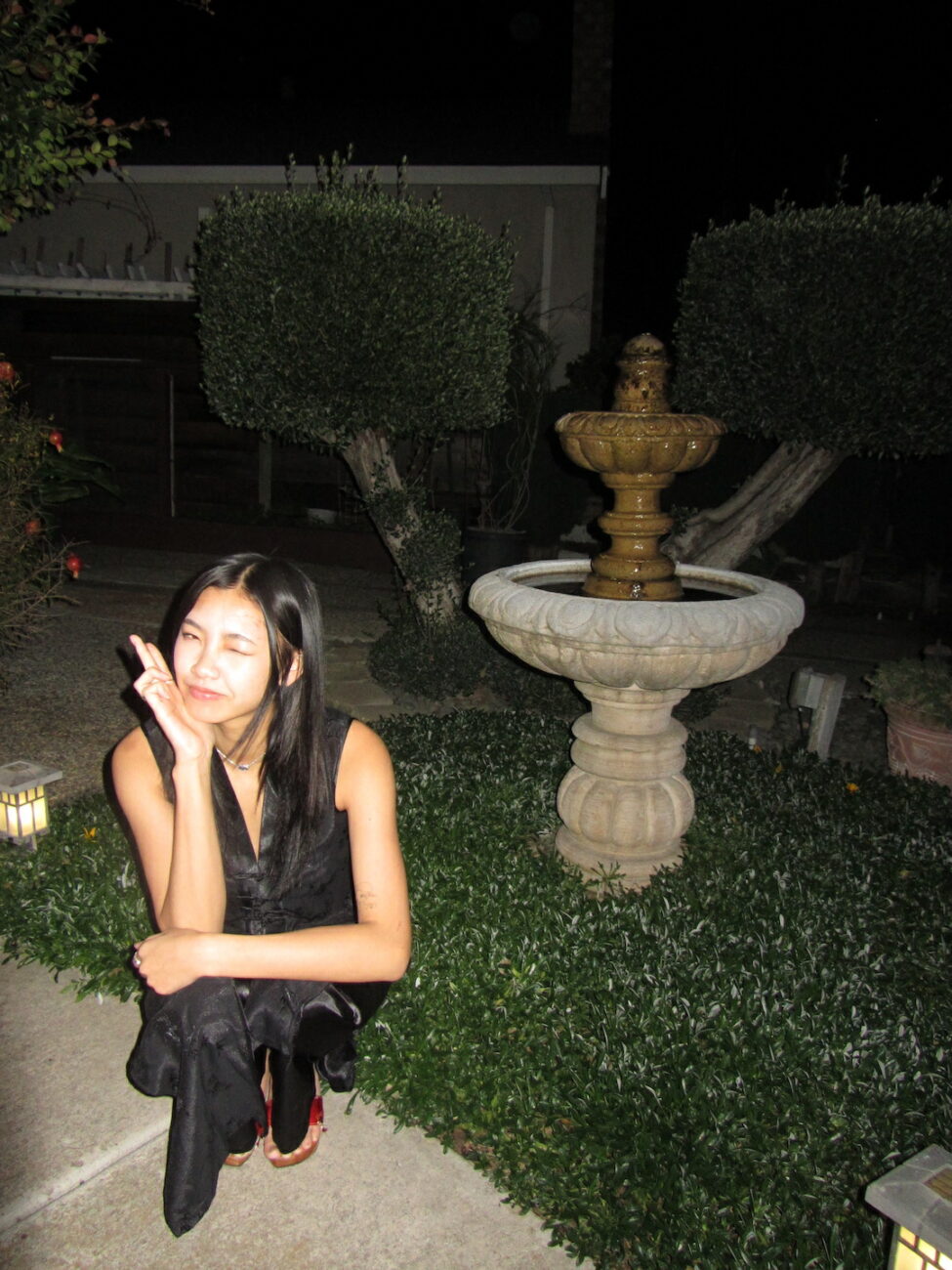
Cal Poly computer science and design graduate Tanya Ravichandran, who is also a popular fashion influencer with 303k followers on Instagram, posted a reel explaining how she reconnects with her culture through clothing.
In the video, Ravichandran holds up a 1997 Jean Paul Gaultier graphic top of Shiva, one of the gods worshiped in Hinduism.
“I feel so blessed to own this shirt because I feel like it’s one of many ways I can appreciate my culture after rejecting it for so long,” Ravichandran said in the video.
She styles the outfit in a “desi way” — a term used to describe individuals and entities from South Asia — with her bindi, a traditional colored dot worn in the center of the forehead, and jhumka jewelery from her hometown, Bangalore. She also styles it with denim jeans and a matching denim jacket, a classic American look.
Ravichandran’s outfit is an example of “fashion fusion,” a not-new but increasingly popular trend where people harmoniously blend their cultural identities through style by seamlessly incorporating pieces of their heritage into their contemporary wardrobe.
Other Cal Poly students shared their perspective on this trend and its significance to their personal style.

With her mother’s immigration from Vietnam, business administration senior Heather Phan said she grew accustomed to infusing cultural elements into both her lifestyle and fashion choices. Drawing inspiration from her mother’s ability to seamlessly integrate her heritage into everyday life, Phan learned how to artfully blend the two facets of her Vietnamese-American identity into her own personal style.
Some ways Phan practices fashion fusion are by incorporating hair sticks into her everyday looks, which is a traditional Asian practice that stems from as early as 1600 to 1050 BC during the Shang Dynasty in China, according to Yun Boutique. On special occasions, Phan said she also likes to wear áo dài, a traditional silk tunic dress with wide trousers.
Phan said she enjoys incorporating elements from her own culture into her personal style because it allows her to create new and innovative looks that reflect her individuality.


However, she notes fashion fusion is important not only for creative expression but also for cultural understanding. She said she believes fashion is just one way for people to be accepting and appreciative of their cultural backgrounds.
Interdisciplinary studies senior Clarissa Marrufo agreed that embracing fashion from her Mexican heritage has helped her be proud of her cultural identity. Some of her favorite cultural items to style with her contemporary wardrobe include long patch worked skirts, woven ponchos and even religious jewelry she handmakes herself.
“Growing up Mexican American felt very conflicting, as I never felt that I fully belonged to either community, so being able to merge the two identities in my style has helped me feel confident and made me realize that I don’t need to choose one identity or the other,” Marrufo said.
Marrufo and Phan highlighted that while fashion fusion fosters cultural appreciation, there’s a difference between appreciation and appropriation. Embracing different cultures in fashion has led to controversy in several cases when done in the wrong way such as through cultural appropriation or disrespecting sacred traditions.
“It inspires so much creativity and helps others feel seen and represented,” Marrufo said. “But with that being said the lines between fashion and tradition become very blurred, so it is important to be respectful and mindful.”
Graphic Communications senior Rain Mazumder said that integrating clothing pieces from her cultural heritage with Western fashion has provided her with a platform to embrace her mixed ethnic background. As someone of South Asian and White descent, this fusion allows her to celebrate her diverse identity.
Mazumder adds a personal touch to her everyday attire by incorporating traditional desi jewelry collected or gifted to her over the years. Among her favorites are her red jhumkas, gold bangles and a gold necklace adorned with large red beads — a cherished heirloom passed down from her aunt to her mother and now treasured by her.
“I hope to continuously be creative with how I infuse Desi clothing into my outfit choices, especially because of how aligned and connected I feel to myself and my family when representing this part of myself,” Mazumder said.

Mazumder said she sees the blending of cultural styles and traditions with Western fashion as a powerful symbol reflecting the lived experiences of many individuals. She said it represents a profound connection to preserving and expressing the authentic traits and traditions of their culture in the midst of an increasingly Westernized environment.
“Western ideals, whether this be in the way we dress, the food we eat or the way we decorate our homes, have seemingly dominated our perceptions of what is considered standard that has generally led to either the marginalization or appropriation of non-Western values,” Mazumder said. “This is the setting that many children of immigrant families or of non-White ethnicities may have felt growing up in America, a feeling that has caused many of us to experience indifference at some point in our lives toward our cultural identities.”
Therefore, fashion fusion serves not only as a celebration of individual cultural heritage but also as a catalyst for societal progress, fostering a harmonious blending of diverse cultural influences, according to Mazumder.
“[It] not only allows us to reclaim our own heritages but also serves to move and inspire others to do the same, gradually breaking down the barriers of assimilation as we move towards crafting a world where authenticity is celebrated,” Mazumder said.

